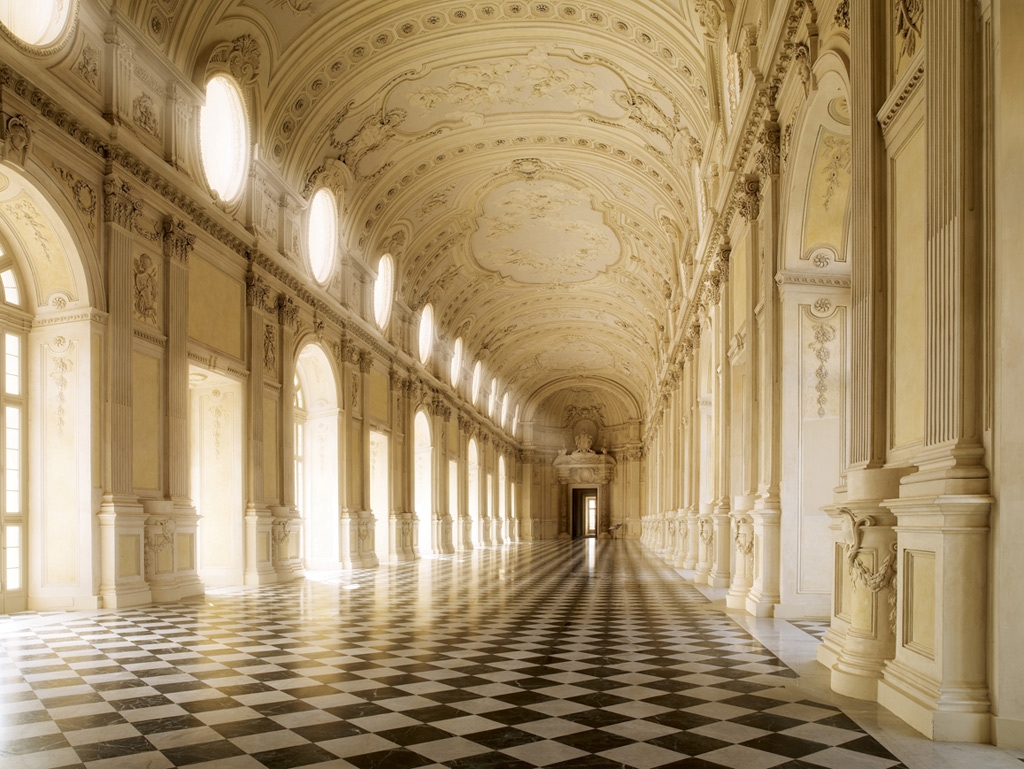
Turin on a Vespa: the Reggia di Venaria and its jewelsThe Reggia di Venaria is one of the most visited places by tourists who choose to come to Turin during the year. This architectural complex on the outskirts of the city was named aUNESCO World Heritage Site in 1997. The Reggia can be reached by Vespa from the city center in about twenty minutes’ drive.
A famous popular Piedmontese saying goes that “He who sees Turin and not the Venaria, sees the mother and not the daughter.” That’s right, because discovering Turin also means visiting one of its most splendid and famous jewels, reborn after years of restoration. In 2020, the Palace will return to its visitors the last architectural beauty still undergoing restoration: the fountain of Hercules.
Before learning about the history of one of the most iconic Savoy residences, find out with us how to get to the Reggia on a Vespa. How to reach the Reggia di Venaria by Vespa from TurinThe Reggia di Venaria is located in Venaria Reale, a municipality in the very first belt of Turin. Riding a Vespa, the travel time from downtown Turin to the Royal Palace is no more than 20 to 25 minutes. In fact, exiting the heavier traffic of the city center, wide tree-lined avenues lead to Venaria, without the need to travel along the ring road. The itinerary to follow is outlined in the tour “Queens and Kings on Vespas, Turin’s Savoy residences” (link).
On a Vespa, you must pay close attention to the signs you will encounter on the road. The Reggia di Venaria is a complex of buildings: to get to the main body, and then to theentrance in Piazza della Repubblica, you have to follow the signs that say “The Reggia di Venaria and Gardens” and not “Juvarrian Stables.” Just before Republic Square, which is not accessible to traffic, there is parking for scooters. The Reggia di Venaria: a must-see for those visiting TurinThe Reggia di Venaria never ceases to amaze Turinese and tourists from all over the world. The result of one of the largest restoration sites in Europe, the Palace of Venaria reopened its doors in 2007. For the past few years, it always appears in the list of the 10 most visited museums in Italy.
Since its construction in 1675, the Palace has experienced mixed fortunes and has been subject to numerous “attacks” by the enemy of the day. For these reasons, some of its parts were destroyed and rebuilt over time.
This monumental complex, however, had its darkest period between the Napoleonic wars and the late 1900s: almost two centuries of total abandonment and use for military purposes.
2007 was the year of the rebirth and return to humanity of one of Europe’s most beautiful royal palaces, which over the years has also become a coveted location for events and exhibitions.
The golden age of the Palace has just begun. In fact, another area is scheduled toopen in the spring of 2020 , which will be restored in the meantime. This is the Fountain of Hercules, one of the largest and most impressive fountains in the Reggia, which is located in the heart of the gardens.
Some remnants of the Hercules fountain had surfaced from the ground during garden redevelopment work. Starting in 2020, these remains will become the basis for the recovery of a fountain that will see the mighty statue of Hercules return to its center, surrounded by spectacular water features.
We’ve given you one more reason to start your visit to the Reggia di Venaria. Set off now, or rather on a Vespa, to reach this precious jewel on the outskirts of Turin!Sign up for Tour in Vespa NewsRemain up to date on the launch of new tours and exclusive promotions: you’ll receive valuable tips for experiencing TourinVespa at its best!
Discover the Chianti Region by Vespa: A Unique Tuscan Experience
What to Do in Spring: Discover Italy on a Vespa Tour
Experience the Langhe: 4 Exclusive Apartments in Alba
Mother’s Day: the perfect gift idea
Discovering Lake Maggiore and Lake Orta: the Vespa experience
Valentine’s Day on a Vespa: The Best Gift Ideas for Couples
Vespa Tours
The Italian Experience snc of Luca Paolo Celotto and Diego Remondino
P.IVA 12327230012 – REA: CN – 322676
Tua Assicurazioni liability policy N°40324512001433
Fund Policy N°40324512000456 dated 05/04/2024
Scia Prot.no. 0000752 dated 24/02/2021 issued by the Province of Cuneo